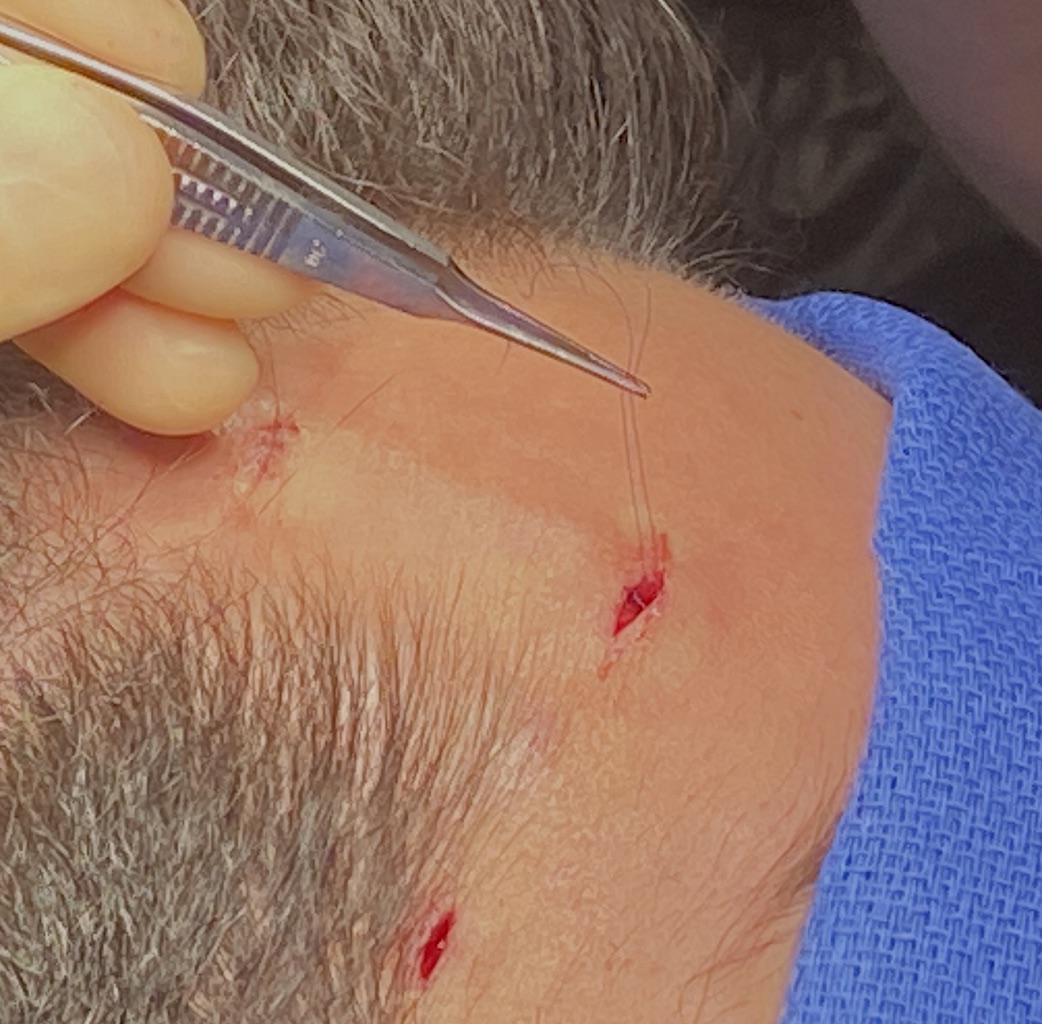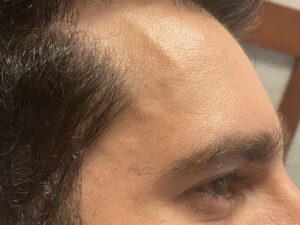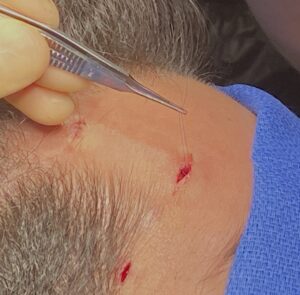Background: The superficial temporal artery (STA) is one of numerous blood supplies to the top of the head and scalp. Emanating off of the external carotid artery in the neck the origin of this arterial branch courses in front of the ear where its ascends into the temporal region and splits into anterior and posterior branches. The anterior branch then crosses into the exposed forehead before making an almost 90 degree turn up into the scalp.
Why temporal arteries become more prominent in some individuals is not known. It does occur much more frequently in men than women and is more likely to occur in thinner patients with some temporal concavities/hollowing. In a few patients there are obvious explanations such as weight loss and aging where thinning of subcutaneous tissue thickness exposes the arterial pathway in the temporal and side of the forehead. It is also unknown why this end arterial branch has such a serpiginous pattern as it crosses into the forehead. (the artery leading up to it does not) There has to be a biologic reason for such a pattern but to date I have not thought or heard of a good explanation for it.
What is better known are the triggers that make the STA more prominent. Exercise, heat and alcohol are well known to do so. An elevated heart rate and subsequent increased blood flow are obvious triggers. Heat understandably causes the more superficial arteries to dilate by either smooth muscle relaxation, the need to release heat or both. The influence of alcohol on muscle relaxation is also well known but it is n to a direct one. Alcohol is a central nervous system depressant which secondarily causes peripheral muscle relaxation…of all muscles. The STA just happens to be an easily observable one due to its superficial location.
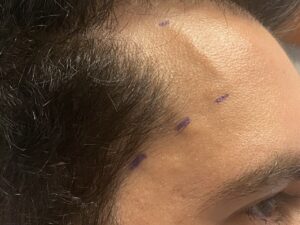
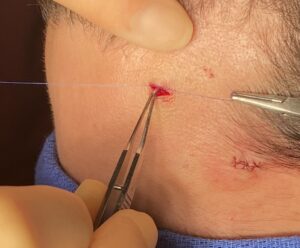
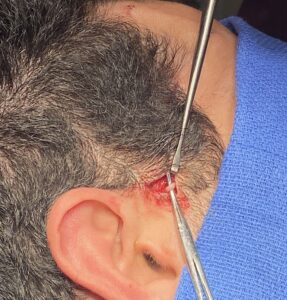
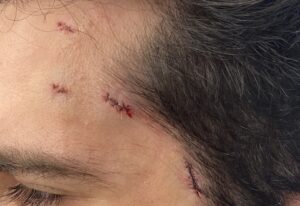
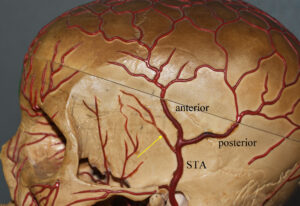
Case Highlights:
1) The reason for prominent temporal arteries is not known but there are some known triggers…in this case beer was the most prominent initiator.
2) Multi-level ligations are required to reduce the appearance of prominent temporal arteries, usually four on each side is required.
3) In refractory cases that fail a negative doppler sign it may be necessary to ligate the main trunk of the artery at the sideburn area in front of the ear.
Dr. Barry Eppley
World-Renowned Plastic Surgeon

